This post may contain affiliate links. Please read our disclosure for more info.
When we see 5-year-old gymnasts on TV showing off their middle splits we sometimes look at our own body and think: “That ship has sailed, I’ll just never be one of those flexible people.” Many people think there is no way of becoming flexible if you don’t start early -but are they right?
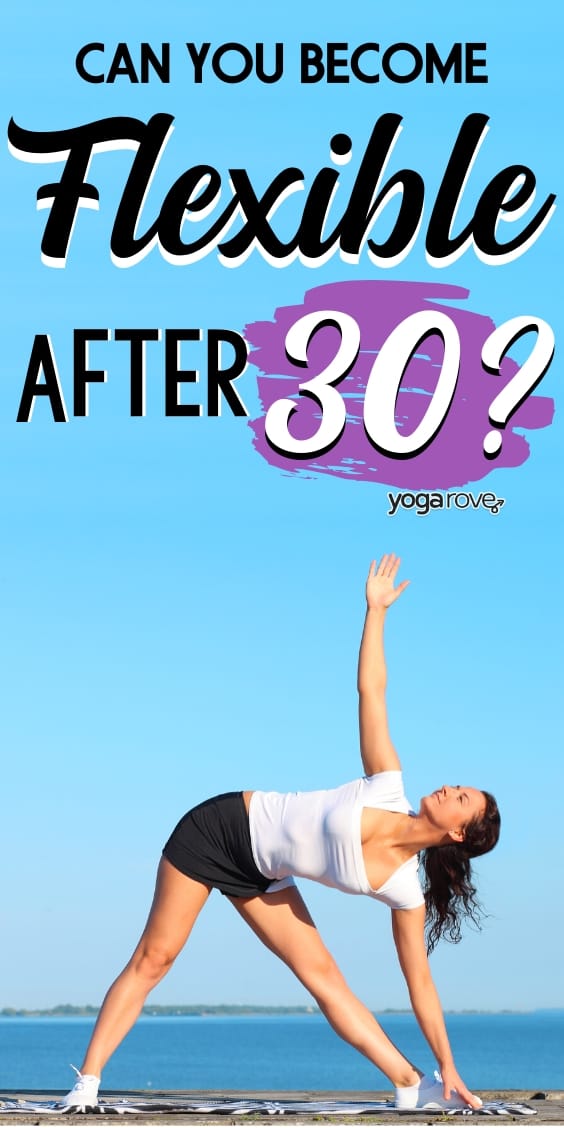
Can you become flexible in your 30’s?You can still become flexible in your 30’s, 40’s or even 50’s. Your natural flexibility decreases with age, but your ability to become flexible stays the same – it is all about consistent training.
Many people might ask themselves why they would even want to be flexible and see it as nothing more than a nice asset for Instagram pictures or a fun party trick, but flexibility is a lot more important than that.
Why is Flexibility Important?
Many very fit people completely neglect their flexibility, mostly focusing on endurance and strength. But there are actually a few important reasons why stretching should be part of your workouts:
1.Flexibility can prevent injuries
If our muscles are tight, we’re more prone to injury. It is easy to tear/strain your muscles if they’re not warmed up.
2.Flexibility enhances your sports performance
Greater shoulder flexibility allows swimmers to have more powerful strokes and flexible hamstrings make higher kicks easier for kickboxers. In yoga classes you might see very strong people struggle with poses because they’re lacking the flexibility. To reach the height of your potential, you need both strength and flexibility.
3.Stretching releases tension and helps you relax
The tension that builds up in your body over the course of a long and stressful day can be simply released by stretching in the evening. Releasing physical tension will also help you relax your mind – a tense body sends your brain the signal that you must be alert.
Our ancestors’ bodies would tense up to prepare for their “fight or flight”, therefore it is hard for your mind to completely relax when your body is tense. By stretching you give signals to your brain that there is no danger and no reason to run.
4.Flexibility improves your posture
Not only are a hunchback and rounded shoulders painful, it also makes us look insecure and miserable. Better shoulder flexibility and a straight spine helps with back pain, makes us seem more confident and improves your overall mood.
I’m sure we’ve all experienced the difference it can make to sit up straight and hold our head up high – it is the “okay, let’s do this”-posture and helps you feel more motivated.
Why do we lose flexibility as we age?
Your collagen structure, a protein in your connective tissue (tendons/ligaments etc.), begins to decrease. Your body doesn’t hold on to things it doesn’t need, therefore it will try to ditch everything that is not being used.
If you don’t use your muscles, they will get smaller. The same goes for flexibility- if you don’t use your range of motion, you’ll lose it. If you spend your day in a chair with a hunchback and don’t do anything to counteract your bad posture (sitting up right, stretching), your body will adapt to it.
We also tend to exercise less as our lives become busier with a job and family, leading to a vicious cycle. We don’t exercise/stretch because (we tell ourselves) we don’t have enough time, and when we find/make time we don’t feel like exercises/stretching because we feel so stiff and our range of motion is limited.
How to Become Flexible After 30
The answer is easy: dedication and patience. There are tons of beginner yoga routines for flexibility to get started with, but even so, you must remember a few things:
- Take advantage of tools. Remember to always modify with straps, blankets (for knee pain) and yoga blocks. They are so necessary in the beginning. If you aren’t sure what you need, check out our recommended tools.
- Choose the right class. If you join yoga classes to improve your flexibility, choose classes for beginners or if you go in person, small groups where the teacher can actually control your alignment and help you modify the stretches.
- Take it slow. Don’t go as deep as you can in the beginning. Wait for your body to open, then go a bit deeper.
- Breathe! You might think: “Of course, it’s not like a have a choice.” I’m talking about conscious breaths. This will help your body relax and allow you to deepen the stretch.
- Don’t set unrealistic goals. If you expect to master your splits or swing your leg behind your head in a week (or even a month), you’ll soon get frustrated and chance are you’ll stop stretching all together. Give your body time and observe and celebrate the little positive differences you can see.
- Let go of any expectations. Just keep on stretching and see where your body will take you.
How Often Should I Stretch to Improve Flexibility?
Try to stretch daily for at least 10 minutes. I suggest taking one rest day per week, or maybe even more if you’re feeling sore in the beginning.
Generally, it is recommended to stretch after exercise to decrease the risk of injury, it also helps with sore muscles.
If you want to see results you should keep at it for at least one month. How quickly you’ll see results depends on the individual person, but you should definitely start noticing little differences after 4-6 weeks.
If you get bored easily or/and want to make it easier for yourself, you can also stretch while watching TV or listening to music. This makes any excuses invalid.
Yoga Stretches for People Over 30
Here are a few stretches that are safe for beginners and can help you improve your flexibility step by step. All stretches should be held to a count of 10.
Overhead Side Stretch
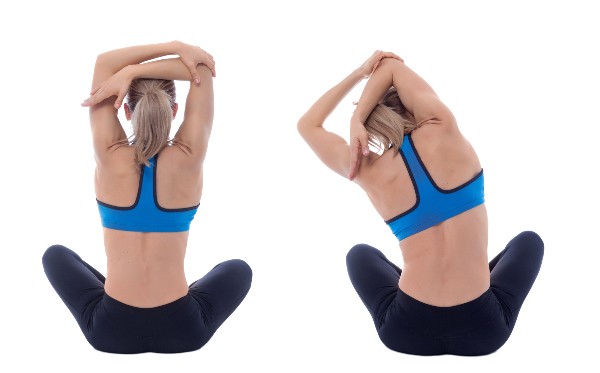
- Sit in a chair or stand and lift you arms up overhead.
- Take hold of your right wrist or elbow and begin to slowly pull it to your left side, stretching your entire right side body.
- Keep the shoulders in one line and the chest open, then hold on to your left wrist with your right hand and repeat the stretch on the other side.
- This stretches your whole side body.
Cat&Cow
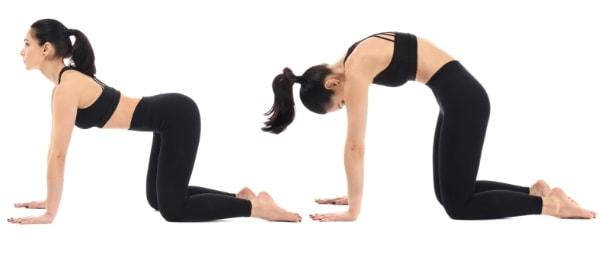
- Start in tabletop pose with your knees under your hips and your hands under your shoulders.
- On an inhale, arch your back, bring your chest forward and look up. This is Cow.
- With the next exhale round your spine and draw your navel to your spine, look down to the ground. This is Cat.
- Repeat these two poses 10 times.
- These two poses increase the flexibility of the neck and spine as well as help warm up your body.
Ragdoll Forward Fold
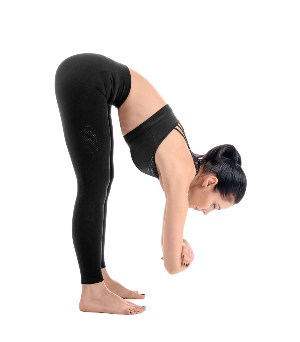
- Start in Mountain Pose with your feet hip width-distance apart.
- Standing tall, begin to hinge forward at your waist until you are folded forward.
- Allow your hands to hang or grab opposite elbows.
- You can gently sway from side to side.
I prefer this over a traditional forward fold because people have the tendency to reach for the floor, even when their body might not be ready yet. This is a gentle stretch for the hamstrings and prepares you for full forward folds.
Supine Spinal Twist
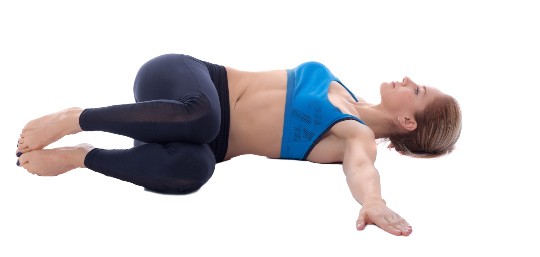
This is my absolute favorite stretch after a long day of sitting. It gently stretches the hips and spine and honestly just feels amazing.
- Lie down on your back, bring your arms out in a T-position.
- Bend both knees so that your knee is in one line with your hips.
- Inhale here, and on an exhale drop your legs over to the right side, turn your head to the left. (If you want to intensify the stretch you can wrap your left leg around your right before dropping both to the right). Keep your left shoulder on the floor.
This releases the tension in your lower back and works wonders against back pain. Repeat on the left side.
Related Questions
How long does it take to become flexible?
It depends on your age, if you’ve trained your flexibility before and on the way your body is built. Generally, you should see improvements after 4-6 weeks. Some people have naturally very open hips and find it easy to sit cross-legged with their knees touching the floor, but might have very tight shoulders. There will always be areas of your body that need more work than others, so you’re never really “done” when it comes to flexibility. To learn more, check out our article on how long it takes to become flexible.
How can I increase flexibility fast?
There is no shortcut to flexibility. If you force your body into positions it is not ready to do yet, you’ll end up hurting yourself. What you can do is stretch daily – even just 10-20 minutes will do.
Can you increase flexibility at any age?
Yes, it doesn’t matter if you’re 16 or 60. Just know that the older you get, the more patience it requires.
After completing her teacher training in India, Franziska started writing about and teaching yoga while traveling. Having her mat with her always makes her feel more at home, no matter where she is. Yoga has improved her life in many ways, and she’d like to share the numerous benefits of yoga with others.


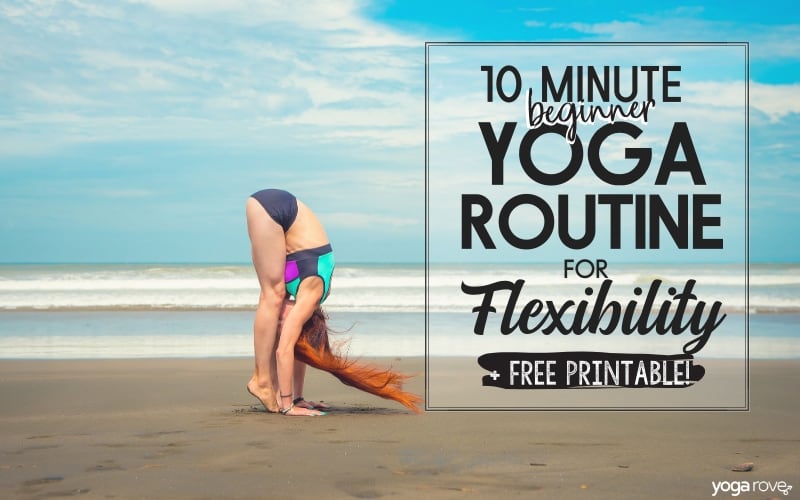
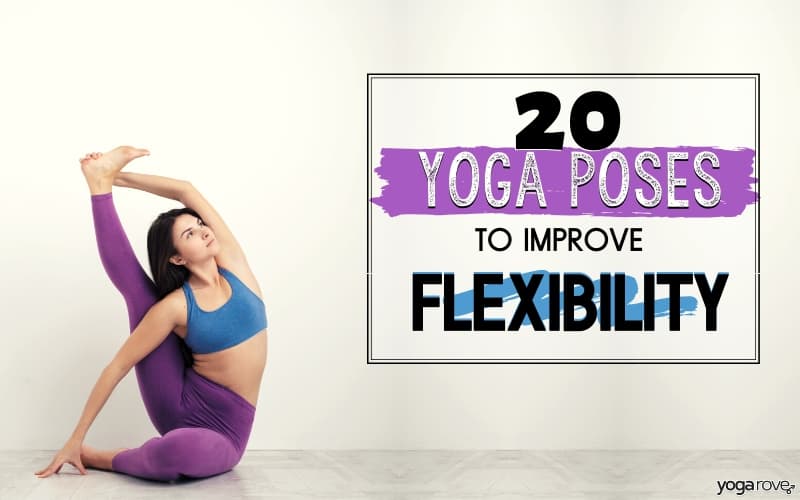
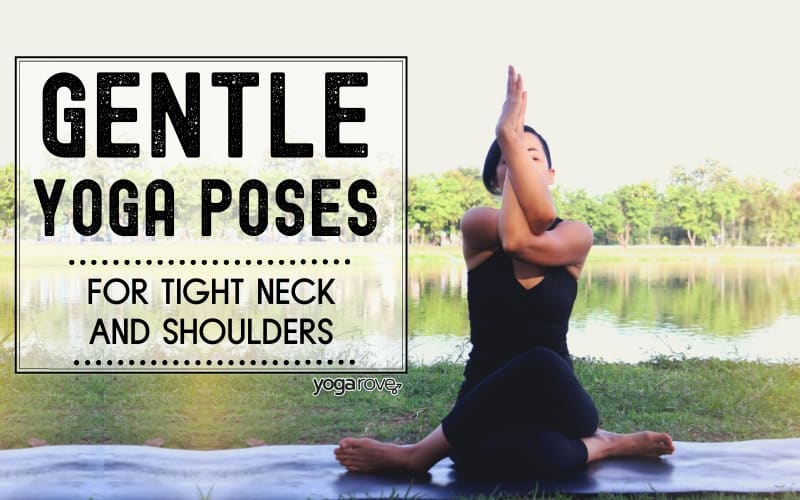
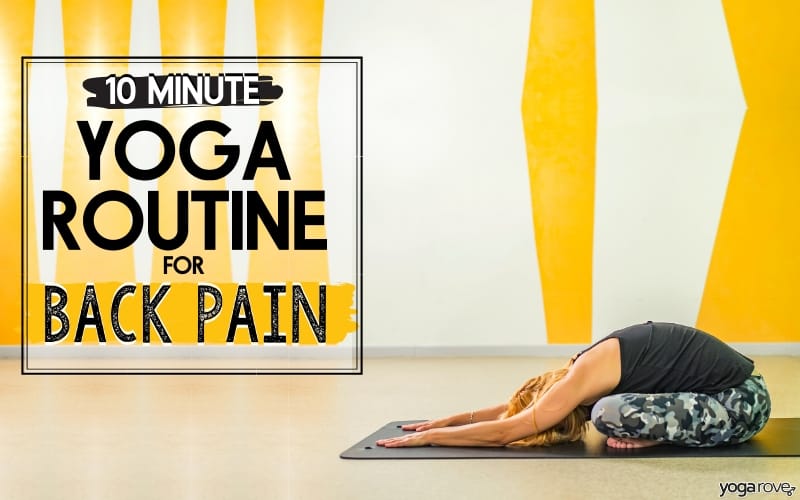
Thank you
Your guidance is very benefit for all of guys
Good luck and appreciate
Glad you found it helpful John 🙂
I have been enlightened , thank you ! 🙂
So glad you found it helpful Mert!